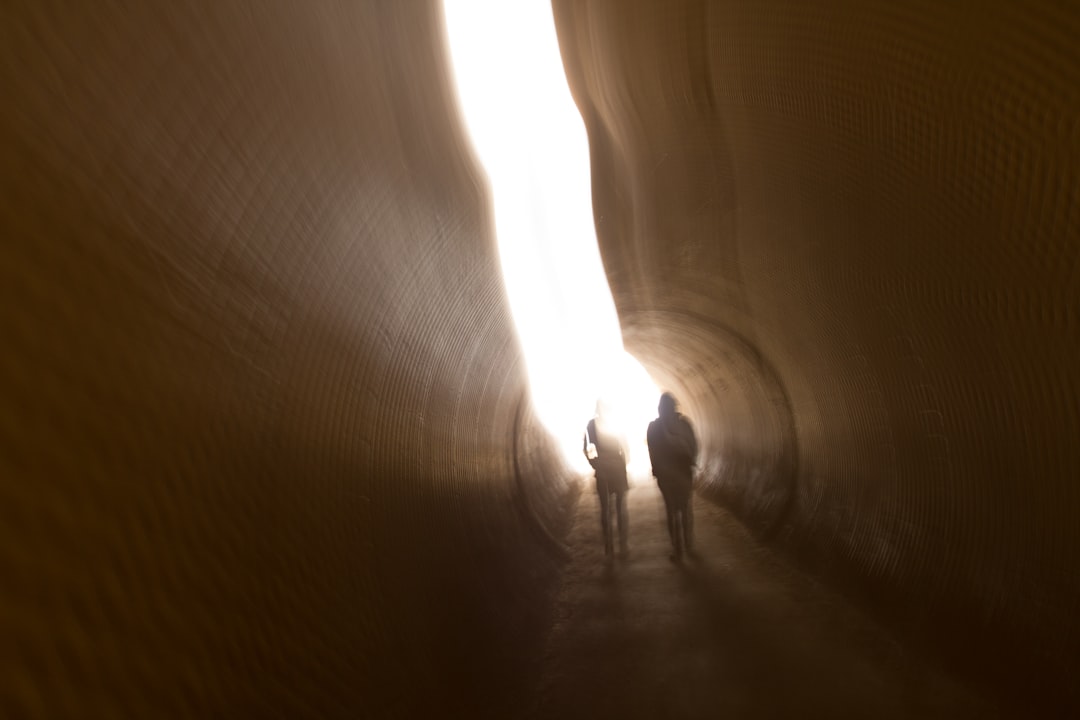The Drake Passage, a body of water situated between the southern tip of South America and Antarctica, is renowned for its tumultuous seas and unpredictable weather. Named after the English explorer Sir Francis Drake, who navigated these waters in the late 16th century, the passage serves as a critical maritime route for vessels traveling to and from the Antarctic region. Stretching approximately 600 kilometers (about 370 miles) wide, it is often described as one of the most challenging maritime passages in the world.
The confluence of the Atlantic and Pacific Oceans creates a unique environment that is both awe-inspiring and formidable. For adventurers and researchers alike, crossing the Drake Passage is often seen as a rite of passage, a gateway to the pristine wilderness of Antarctica. The journey offers not only a chance to witness breathtaking landscapes but also an opportunity to engage with the rich biodiversity that thrives in these icy waters.
However, the passage is not without its perils, and understanding its complexities is essential for anyone considering this remarkable voyage.
Key Takeaways
- The Drake Passage is a treacherous body of water located between South America’s Cape Horn and the South Shetland Islands of Antarctica.
- Navigating the Drake Passage presents challenges such as strong winds, rough seas, and unpredictable weather conditions.
- Choosing the right vessel for the journey is crucial, with considerations for stability, size, and experienced crew.
- Packing essentials for a safe and comfortable voyage includes warm clothing, waterproof gear, and seasickness medication.
- Safety precautions and emergency procedures are essential for dealing with potential hazards such as icebergs and extreme weather conditions.
Understanding the challenges of navigating the Drake Passage
Navigating the Drake Passage presents a myriad of challenges that can test even the most seasoned mariners. The waters are notorious for their rough conditions, characterized by high winds, large swells, and sudden storms. These factors can create a chaotic environment that demands respect and preparation from those attempting to cross.
The convergence of ocean currents in this region often leads to unpredictable wave patterns, making it essential for vessels to be equipped to handle such extremes. Moreover, the passage’s remoteness adds another layer of difficulty. With limited access to rescue services and communication systems, any journey through these waters requires careful planning and consideration of potential risks.
Mariners must be vigilant and adaptable, ready to respond to changing conditions at a moment’s notice. This unpredictability is part of what makes the Drake Passage both daunting and exhilarating, as it challenges travelers to confront nature’s raw power head-on.
Choosing the right vessel for the journey

Selecting an appropriate vessel for traversing the Drake Passage is crucial for ensuring safety and comfort during the journey. Various types of ships are designed for different purposes, and those venturing into these turbulent waters should prioritize stability and seaworthiness. Ice-strengthened vessels are often recommended, as they are built to withstand harsh conditions and navigate through ice-laden waters that may be encountered near Antarctica.
In addition to structural integrity, the size of the vessel plays a significant role in the overall experience. Smaller ships may offer a more intimate atmosphere and greater maneuverability, allowing for closer encounters with wildlife and ice formations.
Ultimately, choosing the right vessel involves balancing safety considerations with personal preferences for comfort and adventure.
Packing essentials for a safe and comfortable voyage
| Item | Quantity | Description |
|---|---|---|
| First Aid Kit | 1 | Includes bandages, antiseptic wipes, pain relievers, and any necessary prescription medications |
| Sunscreen | 1 | SPF 30 or higher to protect from sunburn |
| Insect Repellent | 1 | Protects from mosquito and bug bites |
| Water Bottle | 1 | Reusable and refillable to stay hydrated |
| Flashlight | 1 | For navigating in the dark or emergencies |
| Portable Charger | 1 | To keep electronic devices powered |
Preparing for a journey across the Drake Passage requires careful consideration of what to pack. Travelers should prioritize clothing that is both warm and waterproof, as temperatures can plummet and conditions can change rapidly. Layering is key; thermal base layers, insulated jackets, waterproof outer shells, and sturdy footwear are essential components of any packing list.
Accessories such as gloves, hats, and scarves should not be overlooked, as they provide additional protection against biting winds. Beyond clothing, travelers should also consider bringing personal items that enhance comfort during the crossing. Seasickness remedies, whether over-the-counter medications or natural alternatives like ginger tablets, can be invaluable in mitigating discomfort.
Additionally, items such as binoculars for wildlife watching, cameras for capturing stunning landscapes, and journals for documenting experiences can enrich the journey. By packing thoughtfully, travelers can ensure they are well-prepared for both the challenges and joys that await them in the Drake Passage.
Safety precautions and emergency procedures
Safety should always be a top priority when navigating the Drake Passage. Before embarking on this adventure, travelers should familiarize themselves with emergency procedures specific to their vessel. This includes understanding evacuation routes, life jacket protocols, and communication systems in case of distress.
Crew members are typically trained in emergency response, but passengers should also take an active role in ensuring their own safety. In addition to knowing emergency procedures, travelers should remain vigilant throughout the journey. Regularly checking weather updates and being aware of changing conditions can help mitigate risks associated with sudden storms or rough seas.
It is also advisable to stay informed about potential hazards such as icebergs or floating debris. By maintaining a proactive approach to safety, travelers can enjoy their crossing with greater peace of mind.
Wildlife encounters in the Drake Passage

One of the most captivating aspects of crossing the Drake Passage is the opportunity to encounter diverse wildlife that inhabits these waters. The passage serves as a migratory route for various species, including whales, seals, and seabirds. Travelers may be fortunate enough to spot majestic humpback whales breaching the surface or playful orcas gliding through the waves.
The sight of these magnificent creatures in their natural habitat is often a highlight of the journey. Birdwatchers will also find delight in the avian population that frequents the Drake Passage. Species such as albatrosses, petrels, and skuas can often be seen soaring above the waves or diving for fish below.
The sheer number of birds that congregate in this region creates a spectacle that is both mesmerizing and humbling. For many travelers, these wildlife encounters serve as a reminder of the fragile beauty of nature and the importance of conservation efforts in protecting these ecosystems.
Weather patterns and how it affects the journey
The weather in the Drake Passage is notoriously unpredictable, with conditions capable of changing rapidly within a matter of hours. Travelers should be prepared for a range of weather scenarios, from calm seas under clear skies to fierce storms with high winds and heavy rain. Understanding these weather patterns is essential for planning a successful crossing.
Typically, summer months from November to March offer more favorable conditions for navigation; however, even during this period, storms can arise unexpectedly. Mariners must remain vigilant and adaptable, ready to adjust their course or plans based on real-time weather updates. The ability to read weather patterns not only enhances safety but also enriches the overall experience by allowing travelers to appreciate the dynamic nature of this remote environment.
Activities and experiences during the crossing
While crossing the Drake Passage can be challenging due to its rough waters, it also presents numerous opportunities for engaging activities that enhance the journey. Many vessels offer educational programs led by experienced naturalists who provide insights into the unique ecology and history of the region. Passengers may participate in lectures or workshops that deepen their understanding of Antarctic wildlife and environmental issues.
In addition to educational pursuits, travelers can enjoy recreational activities such as photography workshops or guided wildlife watching excursions on deck. The chance to capture stunning images of dramatic landscapes or observe marine life up close adds an enriching dimension to the crossing experience. For those seeking relaxation, onboard amenities such as lounges or spas provide spaces to unwind while taking in panoramic views of this breathtaking seascape.
Tips for overcoming seasickness
Seasickness is a common concern for many travelers embarking on a journey across the Drake Passage. The combination of rough seas and anxiety about potential discomfort can lead to feelings of unease before even setting sail. However, there are several strategies that individuals can employ to mitigate seasickness and enjoy their voyage more fully.
First and foremost, choosing a cabin located in the middle of the ship can help minimize motion felt during rough seas. Additionally, staying hydrated and consuming light meals before departure can aid in preventing nausea. Many travelers find relief through over-the-counter medications or natural remedies such as ginger or acupressure wristbands.
Engaging in light physical activity on deck—such as walking or stretching—can also help alleviate symptoms by promoting circulation. By taking proactive measures against seasickness, travelers can focus on enjoying their adventure rather than battling discomfort.
The significance of crossing the Drake Passage
Crossing the Drake Passage holds profound significance for many adventurers and researchers alike. For some, it represents a personal challenge—a test of resilience against nature’s formidable forces.
This journey symbolizes not only physical exploration but also a deeper connection to our planet’s ecosystems and climate. Moreover, traversing this passage fosters an appreciation for conservation efforts aimed at protecting fragile environments like those found in Antarctica. As travelers witness firsthand the beauty and vulnerability of these ecosystems, they are often inspired to advocate for sustainable practices that safeguard our planet’s future.
In this way, crossing the Drake Passage becomes more than just a voyage; it transforms into an opportunity for reflection on humanity’s relationship with nature.
Reflecting on the adventure
As travelers complete their journey across the Drake Passage, they often find themselves reflecting on both the challenges faced and the beauty experienced along the way. The passage serves as a reminder of nature’s power—its ability to inspire awe while simultaneously demanding respect from those who venture into its depths. Each wave encountered becomes part of an unforgettable narrative woven into their personal stories.
Ultimately, crossing this iconic waterway leaves an indelible mark on those who undertake it—a blend of exhilaration, humility, and reverence for our planet’s wild places. Whether it is through encounters with majestic wildlife or moments spent marveling at breathtaking landscapes, each traveler carries home memories that will last a lifetime. The adventure across the Drake Passage is not merely about reaching a destination; it is about embracing an experience that connects individuals with nature in profound ways.
Traveling the Drake Passage is an adventure that many explorers and travelers dream of undertaking. Known for its challenging conditions and breathtaking scenery, this journey connects the southern tip of South America with the icy expanses of Antarctica. For those interested in learning more about the unique experiences and challenges of navigating this legendary waterway, a related article can be found on MyGeoQuest. This article delves into the history, wildlife, and personal stories of those who have braved the passage. To explore more about this fascinating topic, visit the article on MyGeoQuest.
WATCH HERE: Drake Passage: Earth’s Deadliest Waters Revealed
FAQs
What is the Drake Passage?
The Drake Passage is a body of water located between the southern tip of South America and the northern tip of the Antarctic Peninsula. It is known for its rough seas and challenging sailing conditions.
Why is traveling the Drake Passage considered challenging?
The Drake Passage is known for its strong winds, large waves, and unpredictable weather conditions. The combination of these factors makes it one of the most challenging and notorious stretches of water to navigate.
What is the best time of year to travel the Drake Passage?
The best time to travel the Drake Passage is during the austral summer, which is from November to March. During this time, the weather is relatively milder, and the sea conditions are generally calmer.
What are the options for traveling the Drake Passage?
Traveling the Drake Passage can be done by cruise ship, expedition vessel, or research vessel. There are also options for flying over the Drake Passage, although this is less common.
What can travelers expect to see while traveling the Drake Passage?
Travelers can expect to see a variety of wildlife, including seabirds, whales, and seals. The passage is also known for its stunning scenery, including icebergs and glaciers.
Are there any safety concerns when traveling the Drake Passage?
Due to the challenging nature of the Drake Passage, there are potential safety concerns, including rough seas and the risk of seasickness. It is important for travelers to be prepared and to follow the guidance of experienced crew members.
